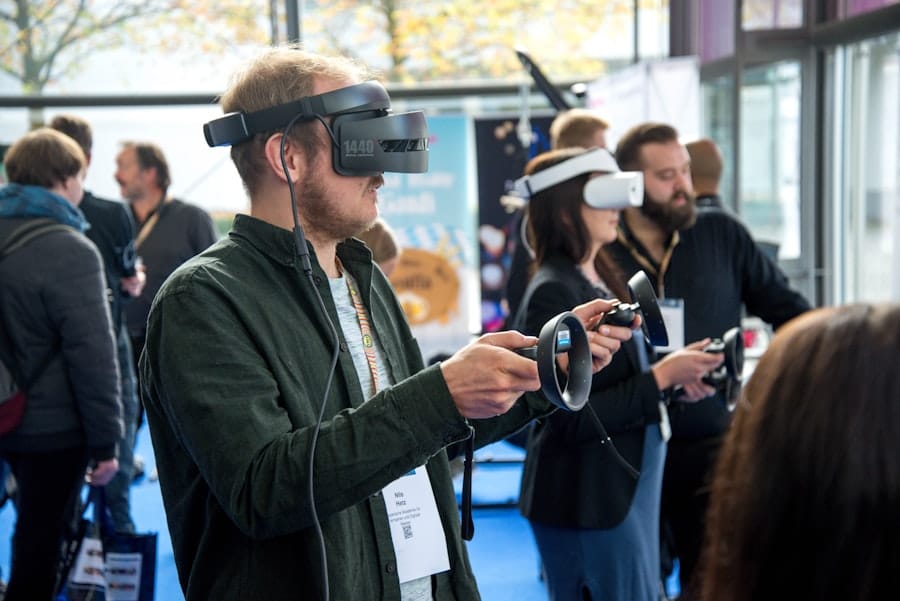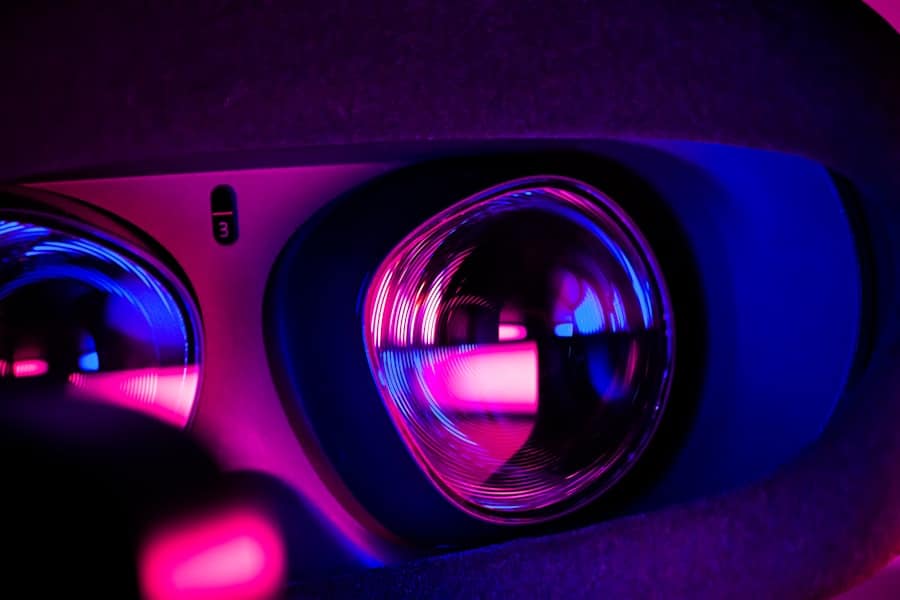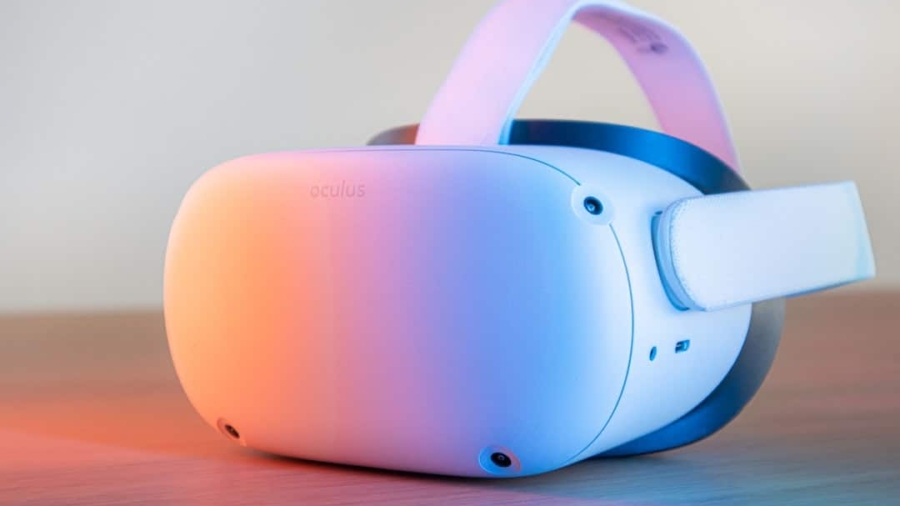Virtual reality (VR) has emerged as a transformative technology in various sectors, and education is no exception. By creating immersive environments that simulate real-world experiences, VR offers students unique opportunities to engage with content in ways that traditional teaching methods cannot match. The integration of VR into educational settings allows for a more interactive and engaging learning experience, catering to diverse learning styles and preferences.
As educators seek innovative ways to enhance student engagement and understanding, the potential of virtual reality becomes increasingly apparent. The application of VR in education spans a wide range of subjects and disciplines. From history lessons that transport students to ancient civilizations to science classes that allow for exploration of the human body at a cellular level, the possibilities are virtually limitless.
This technology not only enriches the curriculum but also fosters critical thinking, creativity, and collaboration among students. As schools and institutions begin to adopt VR tools, it is essential to explore the myriad benefits they offer, particularly in the context of virtual school trips.
Key Takeaways
- Virtual reality (VR) is a powerful tool that can enhance the educational experience by providing immersive and interactive learning environments.
- VR school trips offer benefits such as the ability to visit distant or inaccessible locations, increased student engagement, and the opportunity for hands-on learning experiences.
- Virtual reality trips can be cost-effective compared to traditional field trips, as they eliminate the need for transportation, accommodation, and other logistical expenses.
- VR trips can provide accessibility and inclusivity for students with physical disabilities or limitations, allowing them to participate in educational experiences they may not have been able to otherwise.
- Virtual reality trips can reduce safety risks associated with traditional field trips, such as transportation accidents or exposure to dangerous environments, while still providing a realistic and immersive learning experience.
Benefits of Virtual Reality School Trips
One of the most significant advantages of virtual reality school trips is the ability to provide students with experiences that would otherwise be impossible or impractical. For instance, a class studying marine biology can take a virtual dive into the Great Barrier Reef, observing marine life up close without ever leaving the classroom. This kind of experiential learning deepens students’ understanding of complex concepts by allowing them to visualize and interact with the subject matter in a meaningful way.
Such immersive experiences can spark curiosity and inspire a lifelong passion for learning. Moreover, virtual reality school trips can cater to various educational goals. They can be tailored to meet specific curriculum standards while also addressing different learning styles.
Visual learners benefit from the vivid imagery and simulations, while kinesthetic learners engage with interactive elements that require them to manipulate objects or navigate environments. This adaptability makes VR an invaluable tool for educators aiming to create inclusive learning experiences that resonate with all students, regardless of their individual needs or preferences.
Cost-Effectiveness of Virtual Reality Trips

While the initial investment in virtual reality technology may seem daunting, the long-term cost-effectiveness of VR school trips is noteworthy. Traditional field trips often involve significant expenses related to transportation, admission fees, and meal costs. In contrast, virtual reality trips eliminate many of these financial burdens.
Schools can provide students with high-quality educational experiences without the logistical challenges and costs associated with physical travel. Additionally, VR technology can be reused across multiple classes and subjects, maximizing its value over time. Once a school invests in VR equipment and software, it can facilitate numerous virtual trips for different grade levels and subjects without incurring additional costs for transportation or entry fees.
This scalability makes VR an attractive option for schools operating on tight budgets, allowing them to offer enriching experiences that might otherwise be out of reach.
Accessibility and Inclusivity of Virtual Reality Trips
Accessibility is a critical consideration in education, and virtual reality has the potential to bridge gaps for students with disabilities or those facing other barriers to traditional field trips. For instance, students with mobility challenges may find it difficult or impossible to participate in physical excursions. However, VR allows these students to experience the same educational content as their peers without physical limitations.
By providing equal access to immersive learning experiences, VR promotes inclusivity and ensures that all students have the opportunity to engage with their education fully. Furthermore, virtual reality can transcend geographical boundaries, allowing students from diverse backgrounds and locations to explore cultural landmarks and historical sites worldwide. A student in a rural area may never have the chance to visit a major museum or historical site due to distance or financial constraints.
With VR, these experiences become accessible from the classroom, fostering a sense of global citizenship and cultural awareness among students. This democratization of educational experiences is one of the most compelling aspects of integrating VR into school curricula.
Safety and Risk Reduction with Virtual Reality Trips
Safety is a paramount concern when planning school trips, particularly when they involve travel to unfamiliar locations or activities that may pose risks. Virtual reality trips significantly mitigate these concerns by providing a safe environment for exploration and learning. Students can engage in activities such as rock climbing, scuba diving, or even space exploration without any physical danger.
This aspect is particularly beneficial for younger students or those who may be apprehensive about participating in more adventurous outings.
For example, students studying environmental science can explore ecosystems affected by climate change without putting themselves at risk.
They can witness the effects of natural disasters or human impact on the environment firsthand while remaining safely within the confines of their classroom. This ability to experience high-stakes scenarios without real-world consequences enhances students’ understanding of critical issues while ensuring their safety.
Immersive Learning Experience with Virtual Reality

The immersive nature of virtual reality creates an unparalleled learning experience that engages students on multiple sensory levels. Unlike traditional teaching methods that often rely on passive learning through lectures or textbooks, VR encourages active participation and exploration. Students are not merely observers; they become participants in their learning journey, which fosters deeper engagement and retention of information.
For instance, consider a history lesson on ancient Egypt. Instead of reading about pyramids or watching videos, students can don VR headsets and walk through a meticulously recreated ancient city. They can interact with virtual artifacts, speak with holographic figures representing historical figures, and even participate in cultural rituals.
This level of immersion not only captivates students’ attention but also allows them to form emotional connections with the material, making it more memorable and impactful.
Potential Drawbacks and Limitations of Virtual Reality Trips
Despite its many advantages, virtual reality in education is not without its drawbacks and limitations.
Technical malfunctions, software glitches, or hardware failures can hinder the effectiveness of VR lessons and lead to frustration among both educators and students.
Additionally, not all schools have access to high-quality VR equipment or reliable internet connections, which can create disparities in educational opportunities. Another limitation is the potential for over-reliance on technology in the classroom. While VR offers exciting possibilities for immersive learning, it should not replace traditional teaching methods entirely.
Educators must strike a balance between utilizing technology and fostering interpersonal skills through face-to-face interactions and collaborative activities. Furthermore, there is a risk that some students may become overly absorbed in virtual environments, leading to disengagement from real-world experiences and social interactions.
Future of Virtual Reality in Education
As technology continues to evolve at a rapid pace, the future of virtual reality in education looks promising. Innovations such as improved graphics, more intuitive user interfaces, and advancements in haptic feedback will enhance the overall experience for users. As VR becomes more accessible and affordable, it is likely that more schools will integrate this technology into their curricula, expanding its reach and impact on student learning.
Moreover, as educators gain more experience with VR tools, they will develop new pedagogical strategies that leverage this technology effectively. Collaborative projects involving multiple classrooms across different locations could become commonplace as schools harness the power of VR to connect students globally. The potential for cross-cultural exchanges and collaborative learning experiences will enrich education further and prepare students for an increasingly interconnected world.
In conclusion, while challenges remain in implementing virtual reality in education effectively, its benefits are undeniable. The ability to provide immersive learning experiences that are safe, accessible, cost-effective, and engaging positions VR as a powerful tool for educators seeking to inspire and educate future generations. As we look ahead, it is clear that virtual reality will play an increasingly vital role in shaping the landscape of education.
In the evolving landscape of education, virtual reality (VR) is increasingly being recognized as a powerful tool that can transform traditional learning experiences, such as school trips, by offering immersive and interactive environments. This shift is part of a broader trend of integrating technology into education to enhance learning outcomes. For those interested in exploring other technological advancements, an article on The Best Lenovo Laptops provides insights into the latest devices that can support such innovative educational tools, ensuring that both educators and students have access to the best technology for their needs.
FAQs
What is virtual reality (VR)?
Virtual reality (VR) is a computer-generated simulation of an environment that can be interacted with in a seemingly real or physical way. It creates an immersive experience that can be similar to or completely different from the real world.
How can virtual reality replace traditional school trips?
Virtual reality can replace traditional school trips by providing students with immersive and interactive experiences that simulate real-world environments and locations. This allows students to explore and learn about different places and cultures without leaving the classroom.
What are the benefits of using virtual reality for educational purposes?
Using virtual reality for educational purposes can provide students with access to experiences and environments that may not be possible or practical to visit in real life. It can also enhance engagement, improve retention of information, and cater to different learning styles.
Are there any limitations to using virtual reality for educational purposes?
Some limitations of using virtual reality for educational purposes include the cost of equipment and software, potential technical issues, and the need for proper supervision and guidance to ensure that students use the technology responsibly and safely.
How can virtual reality be integrated into the school curriculum?
Virtual reality can be integrated into the school curriculum by incorporating VR experiences into lesson plans and using them to supplement traditional teaching methods. Educators can also use VR to create interactive and immersive learning experiences that align with specific learning objectives.

